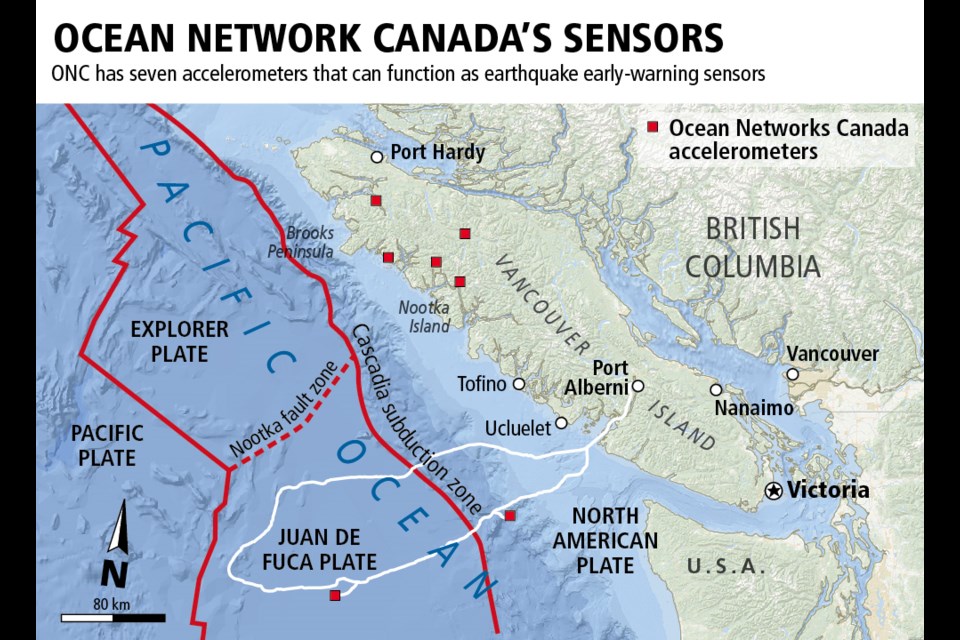Tuesday’s anniversary of the 9.0-magnitude earthquake that rocked the Pacific Coast in 1700 was also another day spent by researchers on a better early-warning system for seismic events.
The research is centred at University of Victoria-based Ocean Networks Canada, where efforts are continuing on a system known as WARN — Web-enabled Awareness Research Network — based on sensors installed at key points along the shoreline.
ONC’s Benoit Pirenne said the organization, which runs cabled ocean observatories off southern B.C., has seven sensors that can give early warning of earthquakes.
“That’s not sufficient, in the sense that we need as many as possible so that so that we, A, don’t miss any opportunity to detect something and, B, that we have sensors as close as possible to any place where an earthquake may hit,” Pirenne said. Taiwan and Japan, for example, have sensors on land in a grid pattern, with one sensor every 10 or 20 kilometres, he said.
Advance notice of an earthquake — perhaps 30 to 90 seconds — would allow for such measures as slowing down trains to lessen the effects of derailment, closing tunnels, stopping surgeries and closing gas valves, Pirenne said.
“Basically, the earthquake early warning allows you to avoid or mitigate the secondary effects of an earthquake,” he said.
The sensors, which are rectangular and about 20 centimetres long, measure displacement in various directions, Pirenne said: “So east, west, north, south and up, down.”
While ONC is looking to install more of the devices, the key will be working with other organizations, he said.
Natural Resources Canada, for example, already has a system of sensors across the country — including on Vancouver Island, he said. “They’re not as sensitive as the ones we are currently using and installing at ONC, but still could play a vital role in an earthquake early-warning system.”
The Ministry of Transportation has sensors at sites such as bridges and tunnels, Pirenne said, while the University of British Columbia has also installed sensors.
These existing sensors could be integrated into a regional or provincial earthquake early-warning system, Pirenne said.
Another positive step would be co-operating with a U.S. venture installing a warning system in Washington, Oregon and northern California, he said, noting that seismic activity “does not know borders.”
The cost of the American system is estimated at more than $30 million, but considerably less needs to be spent here, Pirenne said.
“What we are talking to the province about is basically seeing whether they’d be open to orders-of-magnitude less funding to support what really is the installation of more sensors, but also the facilitation of the integration of all the sensors into a unique system,” he said.
Pirenne said work has already been done on the software system needed for integration.
Combining the systems would put the region on an even footing with Taiwan, Japan and other jurisdictions, he said.



